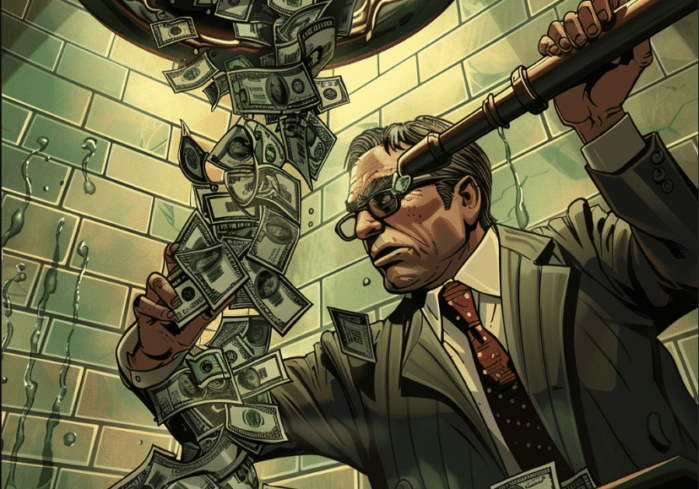Trump’s “Truth Social” and the Digital World Acquisition Corp ($DWAC) SPAC is all the rage while Paypal (PYPL) wants to buy Pinterest (PINS). Prior to Wednesday, DWAC shares traded within pennies of $10, day after day. On Wednesday, the SPAC announced plans to merge with Donald Trump’s newest social media venture. The share price rose to $45 the first day and now trades around $100 a share. After everything we have seen for the last year, chalk this up to just another example of wild speculation.
Powell took the wind out of the market’s sail. In a speech, he admitted inflation is more persistent than he prefers. If it continues, we could likely see interest rate hikes sooner than expected. While only down slightly, the S&P 500’s seven-day winning streak was snapped on Friday.

What To Watch Today
Economy
- 8:30 a.m. ET: Chicago Fed National Activity Index, September (0.2 expected, 0.29 in August)
- 10:30 a.m. ET: Dallas Fed Manufacturing Activity Index, October (6.2 expected, 4.6 in September)
Earnings
Pre-market
- 6:10 a.m. ET: Otis Worldwide Corp. (OTIS) to report adjusted earnings of 74 cents per share on revenue of $3.55 billion
- 7:30 a.m. ET: Kimberly-Clark Corp. (KMB) to report adjusted earnings of $1.65 per share on revenue of $4.99 billion
Post-market
- 4:05 p.m. ET: Facebook (FB) to report adjusted earnings of $3.66 per share on revenue of $29.45 billion
Breadth And Volume Are Terrible
However, to expand on a point from last week, breadth remains dismal with only 60% of stocks above their respective 50-dma even though the index is at all-time highs.
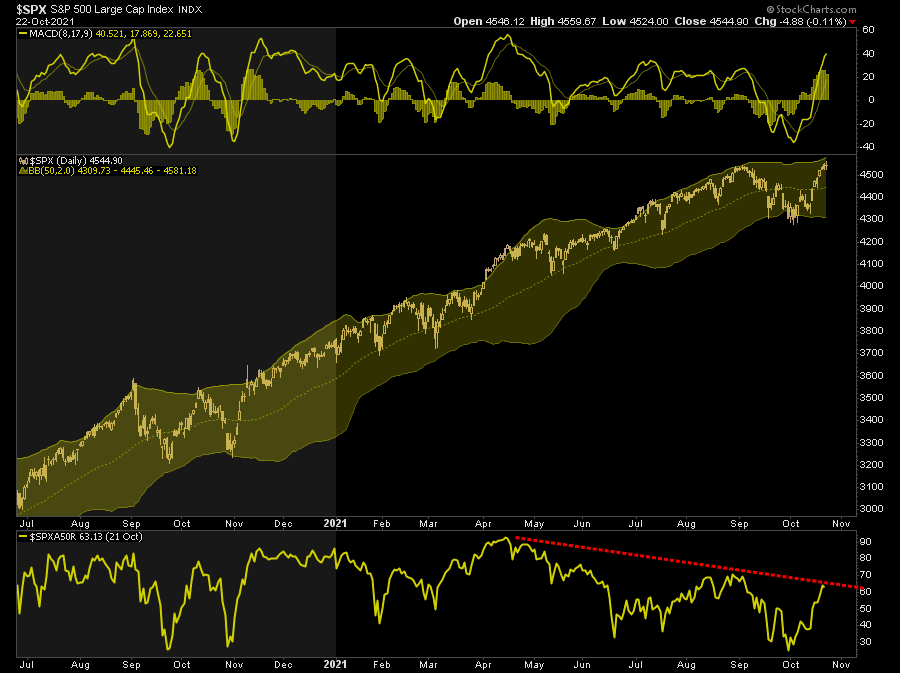
Moreover, our “money flow buy signal” has reversed to previous highs, but volume has dissipated sharply during the advance.
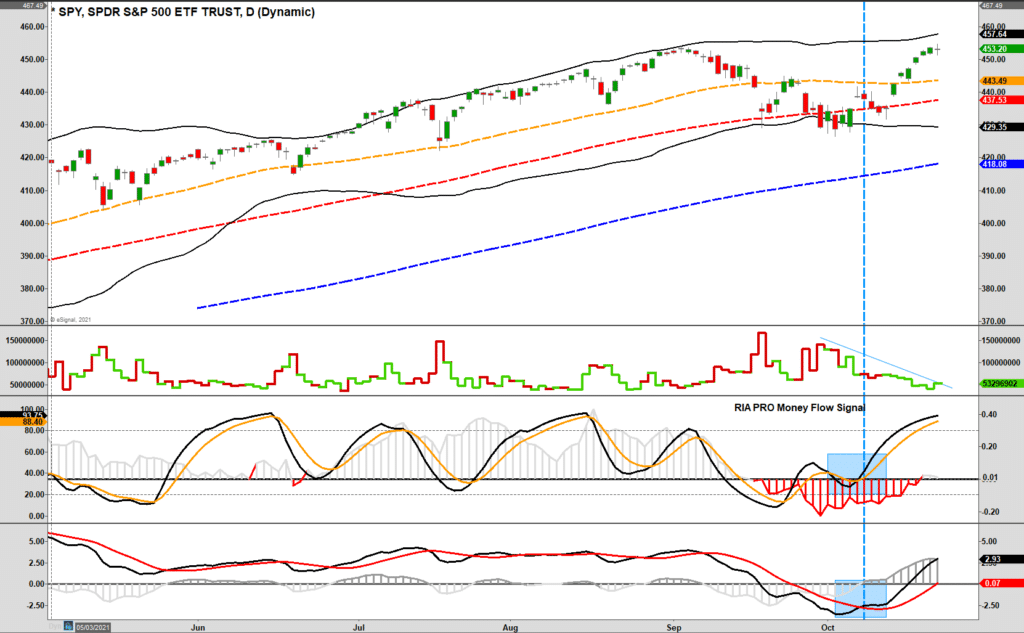
Our concern is that while the expected rally from support occurred, there has been very little “conviction” to that advance. We tend to agree with David Tepper of Appaloosa Management when he stated:
“Sometimes there are times to make money…sometimes there are times not to lose money.“
SPAC’s Double All Of 2019
If you think speculative interest is gone from the market, think again. Last week’s shares of Digital World Media (DWAC) went wacky on news of the launch of Trump’s new social media platform “Truth Social.”
Even with a mid-year lull, 2021 has been the year of the SPAC. According to the latest data, almost 500 companies have chosen to go public in the US this year via a SPAC, or a “blank check” company where money is invested in hopes a company can get acquired. Last week, two big names of interest joined that increasingly long list: WeWork and the Trump Media & Technology Group (TMTG).
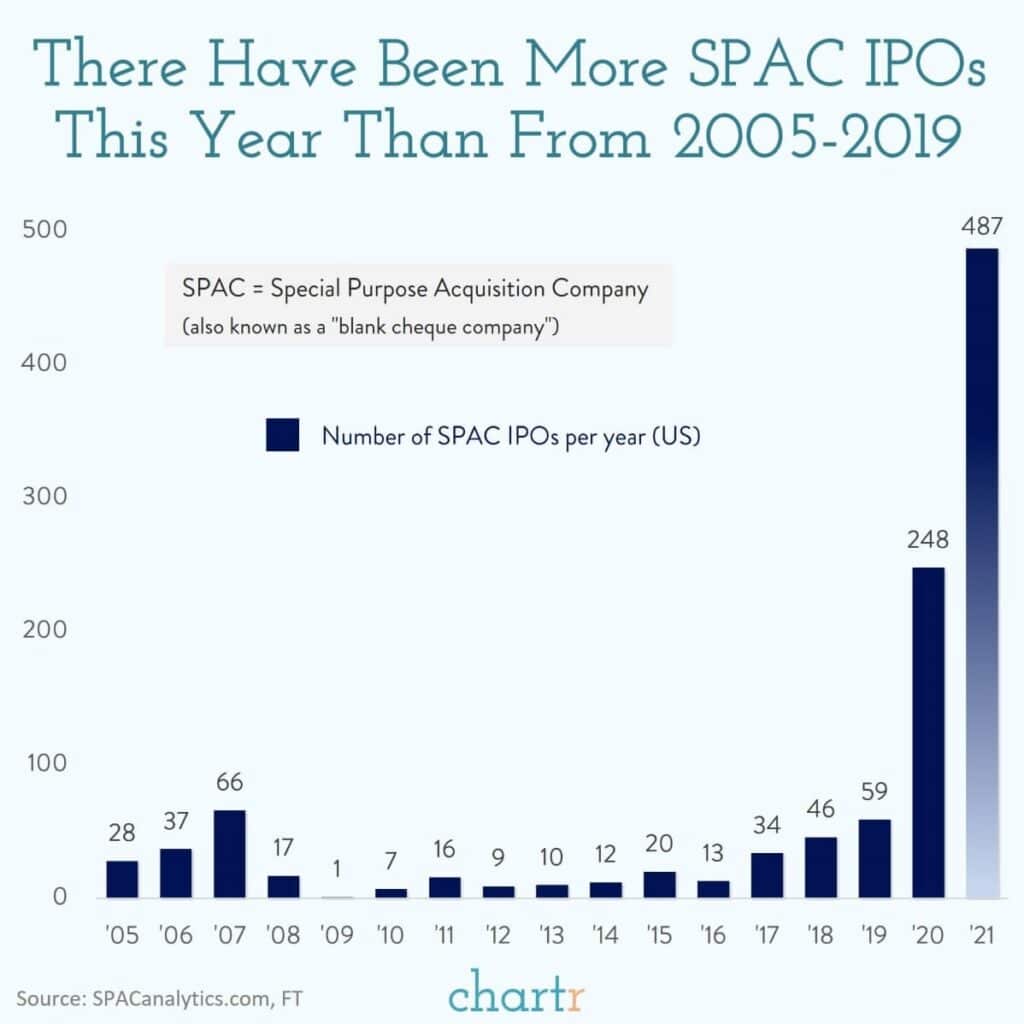
Buyback Window Opens November 1st
Paypal (PYPL) Looking To Buy Pinterest (PINS)
“PayPal is reportedly looking to acquire Pinterest for a valuation near $45bn in a bid to combine two tech companies that begin with the letter ‘P.’
On the surface, that’s about where the similarities or synergies between these two companies stop. PayPal is a payments company and Pinterest is a killer app for making mood boards about your wedding, a renovation you’re doing, or just stuff-you-kinda-like and might want to buy one day.
But that last piece is exactly what PayPal seems to be interested in. Combining PayPal’s payment infrastructure with Pinterest’s 400+ million users could – in theory – create a social commerce giant. You pin a few things you like, and voilà, suddenly PayPal makes it easy to purchase those items with a few taps on your phone.
Last quarter Pinterest active user numbers actually fell, suggesting the company might have hit its user ceiling. That’s been the case for a while in the US, where Pinterest has grown only modestly since 2016, but until very recently, the international growth had been solid — driving total users over 400 million last year.” – Chartr
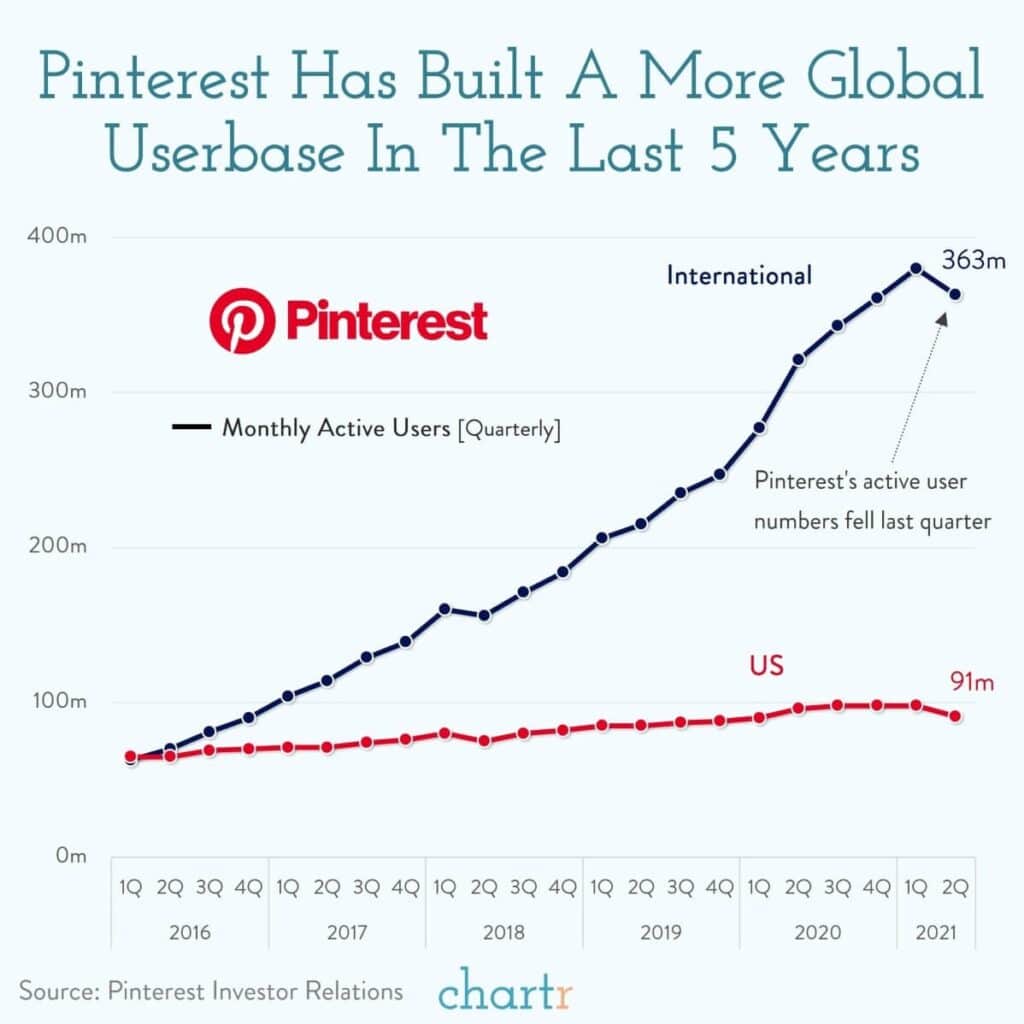
Update:
This morning Paypal says they have NO interest in buying Pinterest.
“PayPal stated that it ‘is not pursuing an acquisition of Pinterest at this time,’ in a one-sentence statement released Monday.
Jerome Powell
In a speech this morning, Jerome Powell said “its time to taper” but not raise rates. He expects to complete tapering by mid-2022. Powell now views “higher inflation” as the biggest risk. Equity markets are trading weaker as he finally acknowledges inflation is more persistent than “transitory.” Bond yields are falling as he implies the Fed should be more hawkish if inflation does not abate.
Flattening Yield Curve
5-year implied inflation expectations are up over 40 basis points (bps) since October 1st. They now stand at a 15+ year high of 2.94%. While inflation expectations rise, the yield curve is flattening. In this case, short maturity bonds are rising in yield much more than longer maturity bonds. The graphs below show what has happened to bond yields since the inflation expectations last peaked on May 18th. As we show the 30-year bond is 26 bps lower since then, while the 2-year note is 26 bps higher. As a result, the 2/30 yield curve has flattened 52 bps over the period.
Our portfolios are set up for the yield curve flattening. The portfolio’s largest bond holding is TLT with a duration of 20 years. The benchmark, AGG, has a duration of 8 years. The models are also not fully vested in the fixed income sleeves to further protect against higher yields.

Credit Card Spending Compensating For Inflation
The graph below, courtesy of Bank of America, shows a recent uptick in credit card spending among those making $50,000 a year or less. It appears consumers, especially those at the lower end of the income scale, are increasingly relying on credit to make ends meet as inflation rises quicker than earnings.

Quantifying The Cost of BITO
Yesterday we pointed out the new Bitcoin ETF, $BITO must roll futures contracts from month to month. We estimate the annual cost based on the current roll from October to November is 15% or even greater. The problem with our estimate is that it does not take into account how the futures curve may change. The graph below, courtesy of J.P. Morgan, provides some historical context to assess the roll cost. It shows the annual cost of rolling the first month to the second-month contract, as well as the second month to the fourth month. As the graph shows the average cost is around 10% annualized, but as the curve shifts the cost or benefit can vary significantly. The cost of rolling futures, ultimately paid by the ETF holder, is not a reason to avoid BITO, but it is a factor worth considering especially if you are planning to hold it for a long period.

Also Read







